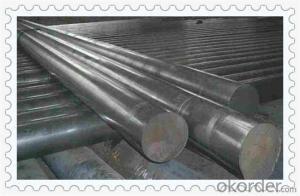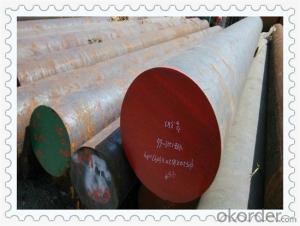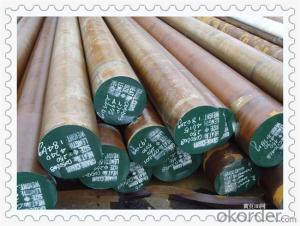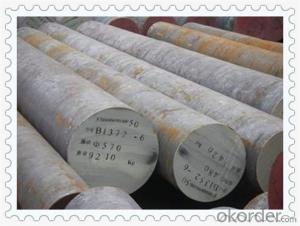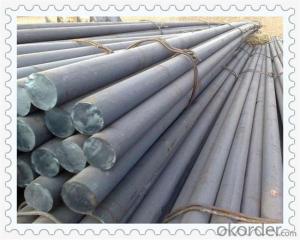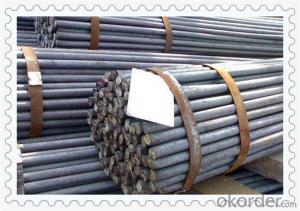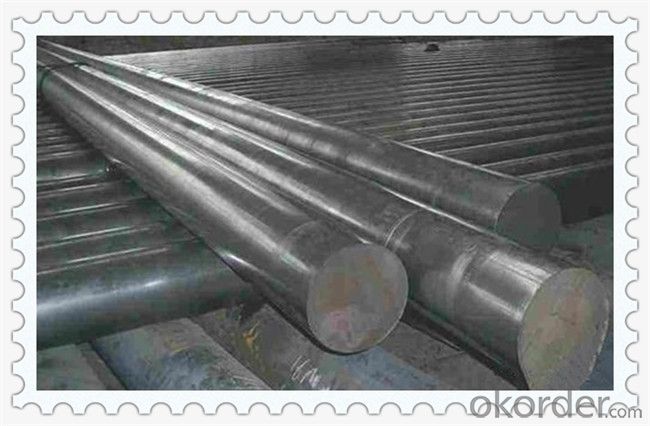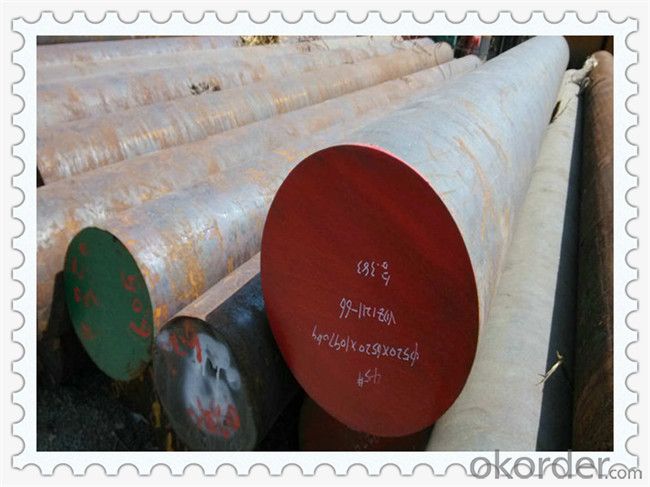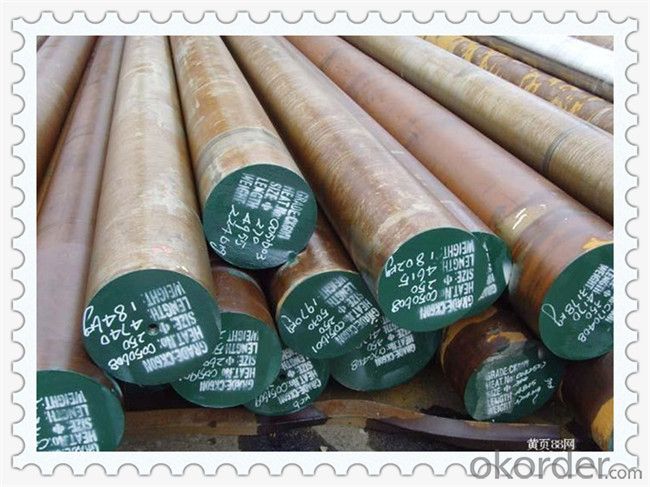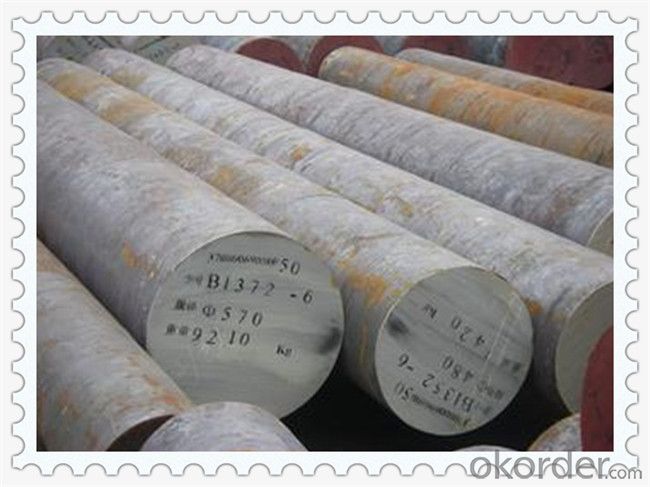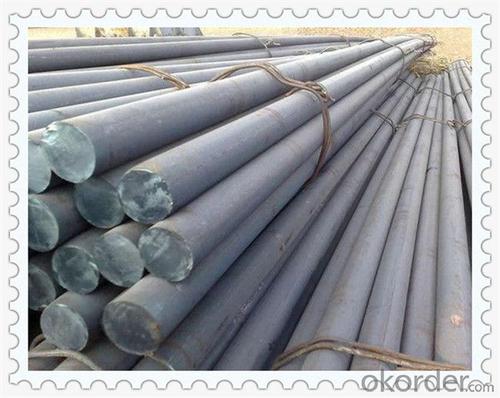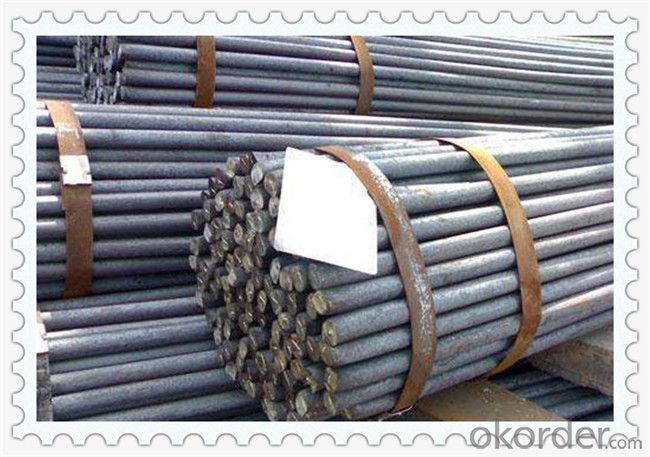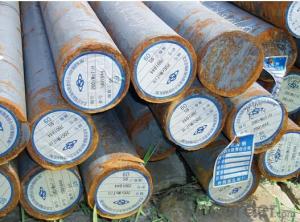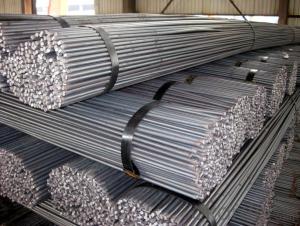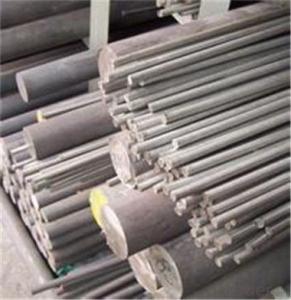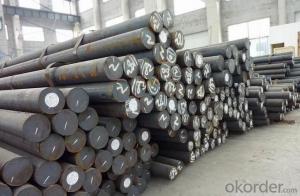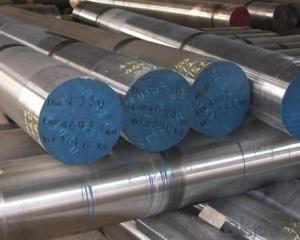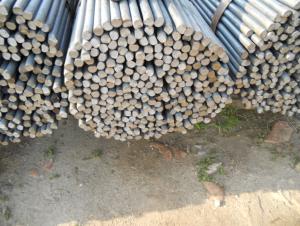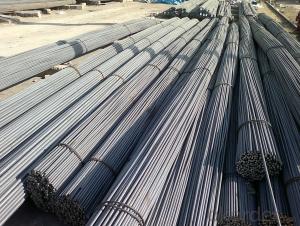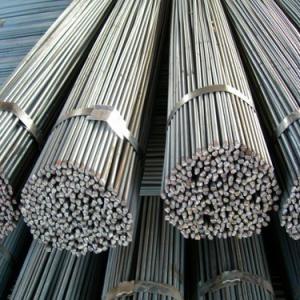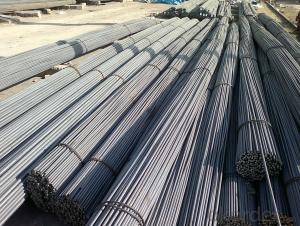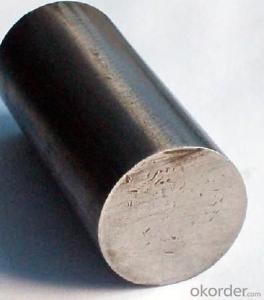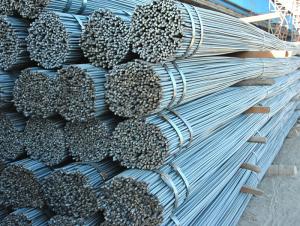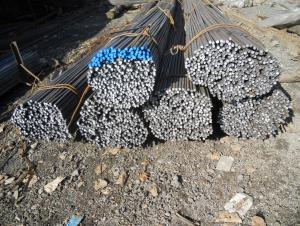12L14 Steel Free Cutting Steel Round Bar
- Loading Port:
- China main port
- Payment Terms:
- TT OR LC
- Min Order Qty:
- 5 m.t.
- Supply Capability:
- 100000 m.t./month
OKorder Service Pledge
OKorder Financial Service
You Might Also Like
Specification
12L14 Steel Free Cutting Steel Round Bar
Specifications
1. Material:12L14
2. Size: 0.2mm-16mm
3. Stable quality
4. Competitive price
We own the eight profassion engineers of high strength steel wire,and five QC to keep the products good quality so that in oversea marketing .we have been getting good reputation for over 10 years.
Next we introduce the products as follows:
1. Steel grade: 12L14; SUM24L.
2. Diameter: 0.2mm-16mm.
3. Application: machinery, mechanical parts, instruments, auto parts and so on.
4. Tolerance standard: h8; h9, h10; h11.
Chemical composition& Tolerance
| Grade | JIS | C | Si | Mn | P | S | Pb |
| 12L14 | SUM24L | 0.15max | 0.15-0.35 | 0.85-1.15 | 0.04-0.09 | 0.26-0.35 | 0.10-0.35 |
| S25CL | 0.22-0.28 | 0.15-0.35 | 0.30-0.6 | 0.03max | 0.035max | 0.10-0.35 | |
| S45CL | 0.42-0.48 | 0.15-0.35 | 0.60-0.9 | 0.03max | 0.035max | 0.10-0.35 | |
| 1215 | SUM23 | 0.09max | 0.75-1.05 | 0.04-0.09 | 0.26-0.35 | ||
| SUN25 | 0.15max | 0.90-1.40 | 0.07-0.12 | 0.30-0.40 | |||
| Tolerance | |||||||
| Range | H8 | H9(Round bar) | H10(Hexagonal bar) | H11 | H12 | ||
| <3mm | 0-0.014 | 0-0.025 | 0-0.040 | 0-0.060 | 0-0.10 | ||
| 3-6mm | 0-0.018 | 0-0.030 | 0-0.048 | 0-0.075 | 0-0.12 | ||
| 6-10mm | 0-0.022 | 0-0.036 | 0-0.058 | 0-0.090 | 0-0.15 | ||
| 10-18mm | 0-0.022 | 0-0.043 | 0-0.070 | 0-0.11 | 0-0.18 | ||
| 18-30mm | 0-0.033 | 0-0.052 | 0-0.084 | 0-0.13 | 0-0.21 | ||
| 30-50mm | 0-0.039 | 0-0.062 | 0-0.100 | 0-0.16 | 0-0.25 | ||
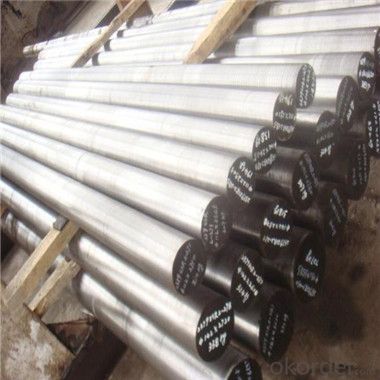
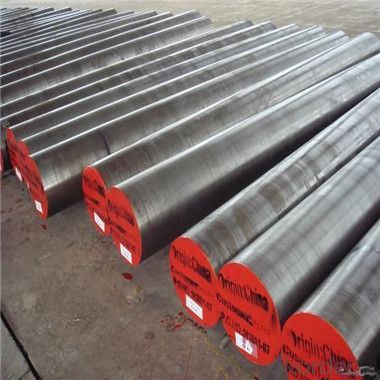
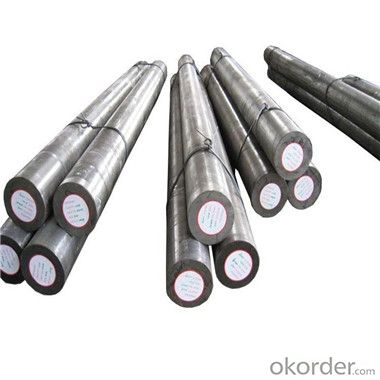
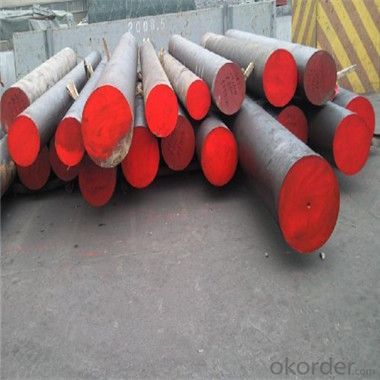
- Q: How do steel round bars perform under vibration or resonance?
- Steel round bars have excellent performance under vibration or resonance due to their high strength and stiffness. They are able to withstand and absorb vibrations, minimizing the risk of failure or damage. Additionally, steel round bars possess good damping properties, which helps in dissipating energy and reducing the amplitude of vibrations, resulting in improved stability and reduced noise levels.
- Q: What are the different types of steel round bar alloys for improved machinability?
- There are several types of steel round bar alloys that are known for their improved machinability. Some common alloys include free-machining steel alloys such as 12L14, 1215, and 1144. These alloys contain higher levels of sulfur, which helps break up the chips during machining and improves the overall machinability of the steel. Additionally, there are also stainless steel alloys such as 303 and 416, which are specifically designed for improved machinability and are often used in applications where corrosion resistance is required.
- Q: What is the maximum copper content allowed for steel round bars?
- The permissible copper content in steel round bars varies depending on the grade and industry standards. Generally, copper is regarded as an alloying element in steel and is usually added in small quantities to improve specific properties. For most steel round bars, the maximum acceptable copper content typically ranges from 0.50% to 1.00%. However, it is crucial to consider that this may differ based on the application and grade of steel utilized. To determine the maximum allowable copper content, it is advisable to refer to the applicable industry standards or specifications for the specific steel grade and application.
- Q: What are the options for joining steel round bars?
- There are several options for joining steel round bars, depending on the specific requirements and applications. Some common methods include welding, bolting, and adhesives. 1. Welding: Welding is a widely used method for joining steel round bars. It involves melting the ends of the bars and fusing them together using a welding process such as arc welding, MIG welding, or TIG welding. Welding provides a strong and durable joint that can withstand high loads and stresses. 2. Bolting: Bolting involves using bolts, nuts, and washers to join steel round bars. Holes are drilled through the bars, and bolts are inserted through these holes. The nuts are then tightened to secure the bars together. Bolting is a relatively simple and quick method, and it allows for disassembly and reassembly if required. 3. Adhesives: Adhesives can also be used to join steel round bars. High-strength industrial adhesives are applied to the mating surfaces of the bars, which are then pressed together and left to cure. Adhesive bonding can provide a strong and durable joint, particularly in applications where welding or bolting may not be feasible or desired. 4. Mechanical couplings: Mechanical couplings are specifically designed for joining steel round bars. These couplings typically consist of two separate components that are fitted over the ends of the bars and tightened together using screws, clamps, or other mechanical means. Mechanical couplings provide a reliable and secure joint without the need for welding or drilling. 5. Cold forming: In some cases, steel round bars can be joined through cold forming techniques such as swaging or crimping. These methods involve mechanically deforming the ends of the bars to create a tight and secure joint. Cold forming is often used in applications where welding or other traditional methods are not suitable. It is important to consider the specific requirements, load-bearing capacities, and environmental conditions when selecting the appropriate method for joining steel round bars. Consulting with a professional engineer or welder can help determine the best option based on the specific application and desired outcome.
- Q: What is the difference between a peeled and a polished steel round bar?
- A peeled steel round bar is a bar that has had its outer layer or skin removed through a peeling process, resulting in a smooth surface. On the other hand, a polished steel round bar undergoes a polishing process to enhance its appearance and create a reflective, shiny surface. While both bars have a smooth finish, the peeled bar focuses on removing imperfections and enhancing the structural integrity, whereas the polished bar prioritizes aesthetics and visual appeal.
- Q: What are the different types of steel round bar alloys used in the construction industry?
- In the construction industry, various steel round bar alloys are commonly utilized. The following are some of the most favored alloys: 1. Carbon Steel: This type of steel alloy is extensively employed in construction due to its exceptional strength and durability, enabling it to be used in a wide array of applications. 2. Stainless Steel: With its remarkable resistance to corrosion and staining, stainless steel is an ideal choice for construction projects that involve exposure to moisture or chemicals. It finds applications in handrails, kitchen equipment, and structural components. 3. Alloy Steel: This steel variant contains additional alloying elements like manganese, chromium, or nickel, which augment its mechanical properties. Alloy steel round bars are renowned for their high tensile strength, toughness, and wear resistance, making them suitable for heavy-duty applications. 4. Tool Steel: Designed specifically for manufacturing tools and machinery components, tool steel round bars are recognized for their hardness, resistance to abrasion, and ability to retain their shape at high temperatures. They are commonly utilized in the construction industry for fabricating cutting tools, dies, and molds. 5. Duplex Steel: This alloy combines the qualities of both austenitic and ferritic stainless steels. Duplex steel round bars offer excellent corrosion resistance, high strength, and good weldability. They are frequently employed in construction projects that necessitate a combination of strength and corrosion resistance, such as in marine or coastal environments. In summary, the selection of a steel round bar alloy in the construction industry hinges on the specific application and project requirements. Each alloy boasts distinct properties and advantages, enabling construction professionals to choose the most suitable option for their needs.
- Q: How do steel round bars perform under bending or flexing forces?
- Steel round bars exhibit excellent performance when subjected to bending or flexing forces due to their exceptional tensile strength and ductility. Their ability to resist deformation and retain their shape makes them highly suitable for various applications in construction, manufacturing, and engineering. Moreover, the combination of high strength and ductility enables these bars to evenly distribute and absorb applied loads, thereby minimizing the risk of failure or breakage. To further enhance the behavior of steel round bars under bending or flexing forces, several factors come into play, including alloy composition, heat treatment, and manufacturing processes. Different grades of steel offer varying levels of strength, toughness, and bending resistance. Additionally, heat treatment techniques such as quenching and tempering can significantly enhance the bars' mechanical properties, rendering them more resistant to bending and flexing. Nevertheless, it is crucial to acknowledge that excessive bending or flexing can result in permanent deformation or failure of steel round bars. Overloading or repeatedly subjecting the material to bending beyond its limits can lead to stress concentrations, microcracks, or even fractures. Consequently, it is of utmost importance to establish appropriate bending limits and ensure proper design and installation to uphold the structural integrity and safety of steel round bars when exposed to bending or flexing forces.
- Q: What are the standard sizes of steel round bars?
- The sizes of steel round bars can vary depending on the country and specific industry standards. Typically, these bars come in a wide range of diameters, starting from 6mm (0.24 inches) and going up to 400mm (15.75 inches) or even larger. For commercial purposes, commonly used sizes include 10mm (0.39 inches), 12mm (0.47 inches), 16mm (0.63 inches), 20mm (0.79 inches), 25mm (0.98 inches), and 32mm (1.26 inches). However, it's important to note that these sizes may differ in various regions and industries. Additionally, specialized applications may require unique dimensions. Therefore, it's always advisable to refer to the relevant industry standards or consult with suppliers to determine the specific standard sizes for steel round bars in a particular context.
- Q: The diameter of 20 solid round steel bend into a circle, what machine bending?
- Or a bar bending machine machine, the installation of a 20cm diameter on the rotating die on the line, available 20mm manual welding steel die making.
- Q: What is the cost of a steel round bar?
- The price of a steel round bar can fluctuate based on various elements, including its dimensions, quality, and the source from which it is obtained. Typically, the larger the diameter and length of the round bar, the more expensive it becomes. Moreover, the steel grade significantly influences the cost since different grades possess different levels of robustness and endurance. Furthermore, the supplier and location also influence the price due to factors such as transportation and market demand. To obtain a precise cost estimation, it is advisable to reach out to a nearby supplier or consult online metal marketplaces for up-to-date pricing information.
Send your message to us
12L14 Steel Free Cutting Steel Round Bar
- Loading Port:
- China main port
- Payment Terms:
- TT OR LC
- Min Order Qty:
- 5 m.t.
- Supply Capability:
- 100000 m.t./month
OKorder Service Pledge
OKorder Financial Service
Similar products
Hot products
Hot Searches
Related keywords
